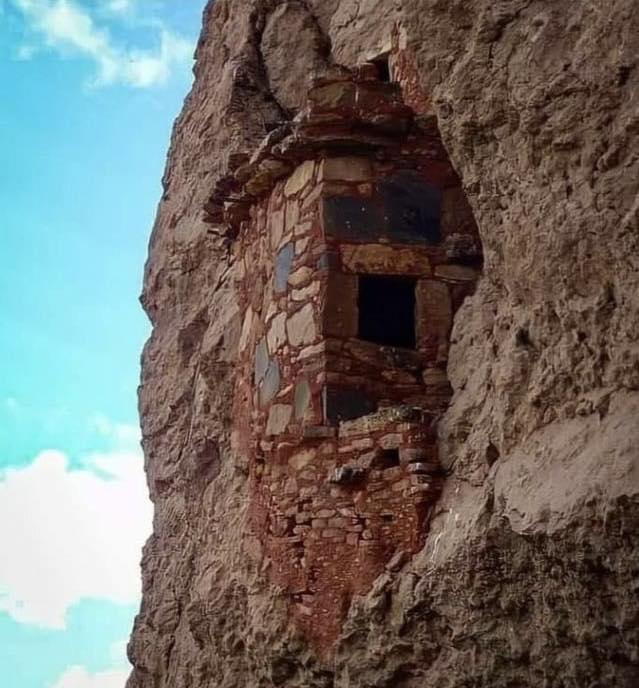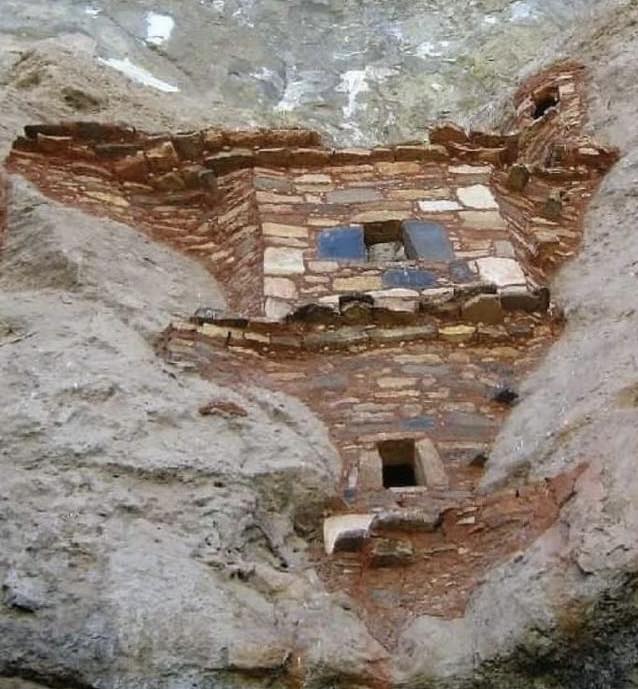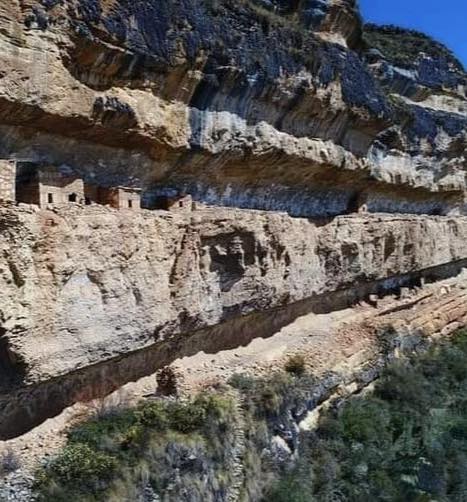High in the ethereal, cloud-kissed heights of the central Andes mountains, where the air thins and mists dance across the rugged peaks, lies the enigmatic pre-Inca citadel of Jagraraj. Perched at a breathtaking altitude of 4200 meters (approximately 13,780 feet) above sea level, this ancient settlement flourished some 4,000 years ago, a significant epoch long before the eventual rise and dominion of the famed Inca Empire. Tucked away within the dramatic and often unforgiving terrain of Peru’s central highlands, Jagraraj stands as a silent yet powerful testament to the early complexity, ingenuity, and societal organization of Andean civilization, a civilization that bloomed in challenging landscapes centuries before the well-documented Inca expansion.
A Citadel Etched into the Mountain: Order and Hierarchy in Stone
Jagraraj extends across the dramatic contours of the mountainscape in a distinct north to southwest orientation, revealing a striking and deliberate sense of order in its layout and construction. Unlike seemingly haphazard settlements, this ancient citadel is meticulously divided into four clearly defined and distinct sections, each exhibiting a hierarchical arrangement of structures. This sophisticated division strongly suggests a degree of social or perhaps ceremonial stratification within the early Andean society that built and inhabited Jagraraj, hinting at a complex social structure with designated areas for different groups or activities. Spanning a considerable horizontal length of roughly 3 kilometers (nearly 2 miles), the sheer scale of the site provides compelling evidence of the ambition, organizational capacity, and significant population of its long-vanished builders, demonstrating a remarkable ability to engineer and sustain a substantial settlement in such an extreme environment.
A Pre-Inca Flourishing: Echoes of Early Andean Complexity
The fact that Jagraraj thrived some four millennia ago places it firmly within the pre-Inca era, a period of Andean history that is still being actively explored and understood by archaeologists. Its existence underscores that sophisticated social organization, complex architecture, and large-scale settlements were not solely the hallmarks of the later Inca Empire but had deep roots in earlier Andean societies. Jagraraj offers a crucial window into this formative period, suggesting a rich tapestry of diverse cultures and innovations that predated the Inca’s rise to power.
Four Distinct Sections: Clues to Social or Ceremonial Structure
The deliberate division of Jagraraj into four distinct sections, each with its own internal organization, strongly implies a structured society with potential social or ceremonial differentiation. Archaeologists speculate that these sections might have housed different social classes, kin groups, or served specific ritualistic or administrative functions. Further investigation into the types of structures and artifacts found within each section could provide valuable insights into the social fabric of this ancient community.
Scale and Ambition: Engineering in a Harsh Environment
The impressive horizontal extent of Jagraraj, stretching across three kilometers of challenging mountainous terrain, speaks volumes about the ambition and engineering capabilities of its builders. Constructing and maintaining such a large settlement at this altitude would have required significant planning, labor organization, and technical skill in working with stone and adapting to the harsh environmental conditions. The sheer scale suggests a society with a considerable population and the capacity for large-scale construction projects.
Surviving the Heights: Ingenuity and Adaptation in the Andes
The sheer altitude at which Jagraraj is situated presents significant challenges to human habitation, including thin air, extreme temperature fluctuations, and limited arable land. The fact that this ancient society not only survived but flourished in such a harsh and demanding environment speaks volumes about their remarkable ingenuity and profound understanding of their surroundings. Their ability to thrive at 4200 meters would have necessitated not only a technical mastery of stone and sophisticated architectural techniques to create durable and functional structures, but also a deep and intimate understanding of the mountainous terrain, its unpredictable weather patterns, and the sustainable management of its limited resources, including water, flora, and fauna. Their survival is a testament to their adaptability and resilience in the face of significant environmental constraints.
Technical Mastery of Stone and Architecture: Building for Endurance
The construction of Jagraraj at such a high altitude required advanced knowledge of stone quarrying, transportation, and construction techniques. The structures needed to be stable and durable enough to withstand the harsh Andean climate, including strong winds, heavy rains, and significant temperature variations. The ordered layout of the citadel suggests a sophisticated understanding of urban planning and architectural design, even at this early stage of Andean civilization.
Deep Understanding of Mountainous Terrain and Resources: Keys to Survival
Survival at 4200 meters demands an intimate knowledge of the local environment. The inhabitants of Jagraraj would have needed to understand the patterns of rainfall and water sources, the availability of suitable plants and animals for sustenance, and strategies for mitigating the effects of the high altitude. Their ability to thrive for a significant period indicates a deep and sustainable relationship with their challenging surroundings.
A Window to the Past: Echoes of Ceremony, Society, and Ancestry
While much of the intricate history and the specific cultural practices of the society that built and inhabited Jagraraj remain tantalizingly to be uncovered through ongoing archaeological investigation, its well-preserved ruins offer a rare and invaluable glimpse into the pre-Inca past of the central Andes. These ancient stones whisper tales of sophisticated ceremonial centers, hinting at complex ritualistic practices and belief systems. The ordered layout speaks to a structured social organization that pre-dates the well-known Inca social hierarchies. Furthermore, the very existence of Jagraraj in this remote and challenging location underscores a deep connection to ancestral heritage and a long-standing human presence in these high Andean valleys. The echoes of this long-vanished world continue to resonate through the breathtaking landscapes of the Andes, inviting further exploration and promising to reveal more secrets about the rich and complex history that unfolded millennia before the rise of the Inca Empire. Jagraraj stands as a powerful reminder that the Andean story is far older and more multifaceted than the well-known narratives of the Inca, offering a profound connection to the deep roots of South American civilization.

CÁC TIN KHÁC
Mary Walton: The Forgotten Inventor Who Helped Clean Up America’s Cities
Tomb of Queen Nefertari in the Valley of the Queens, Egypt
Discover the Hypostyle Hall of the Temple of Hathor at Dendera
Venus de Losange: Unveiling the Mystery of a 20,000-Year-Old Paleolithic Icon